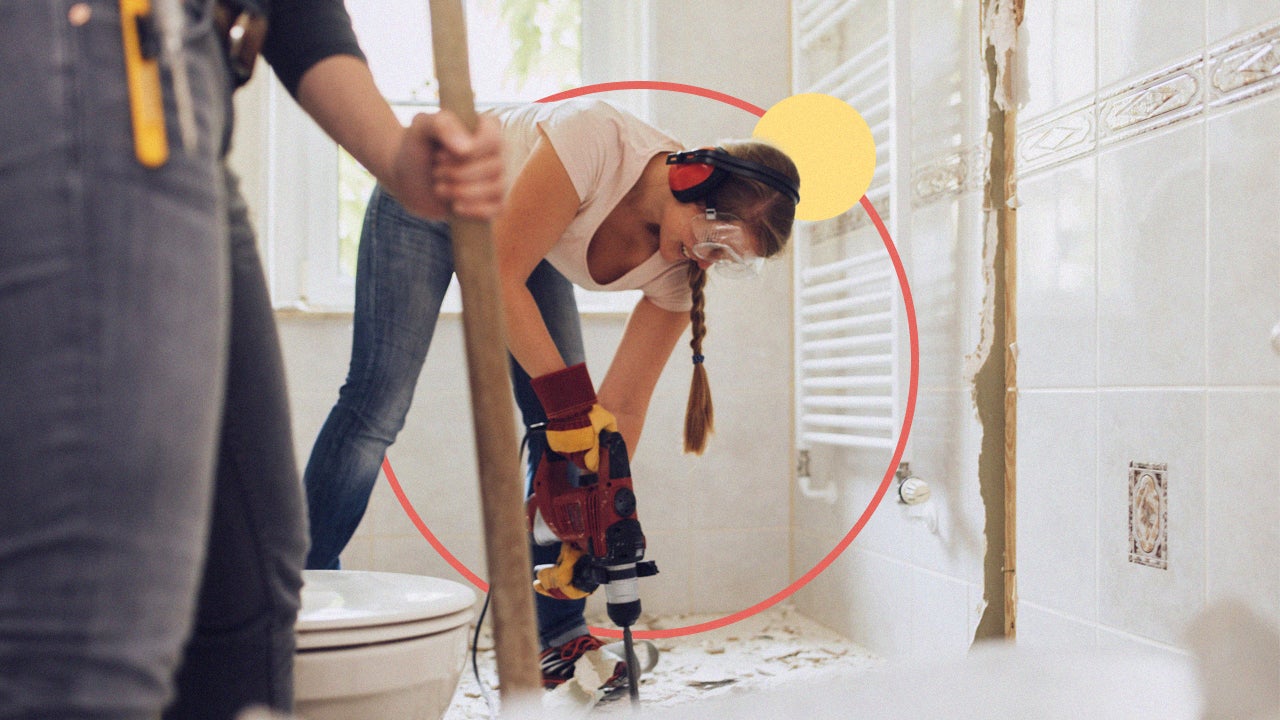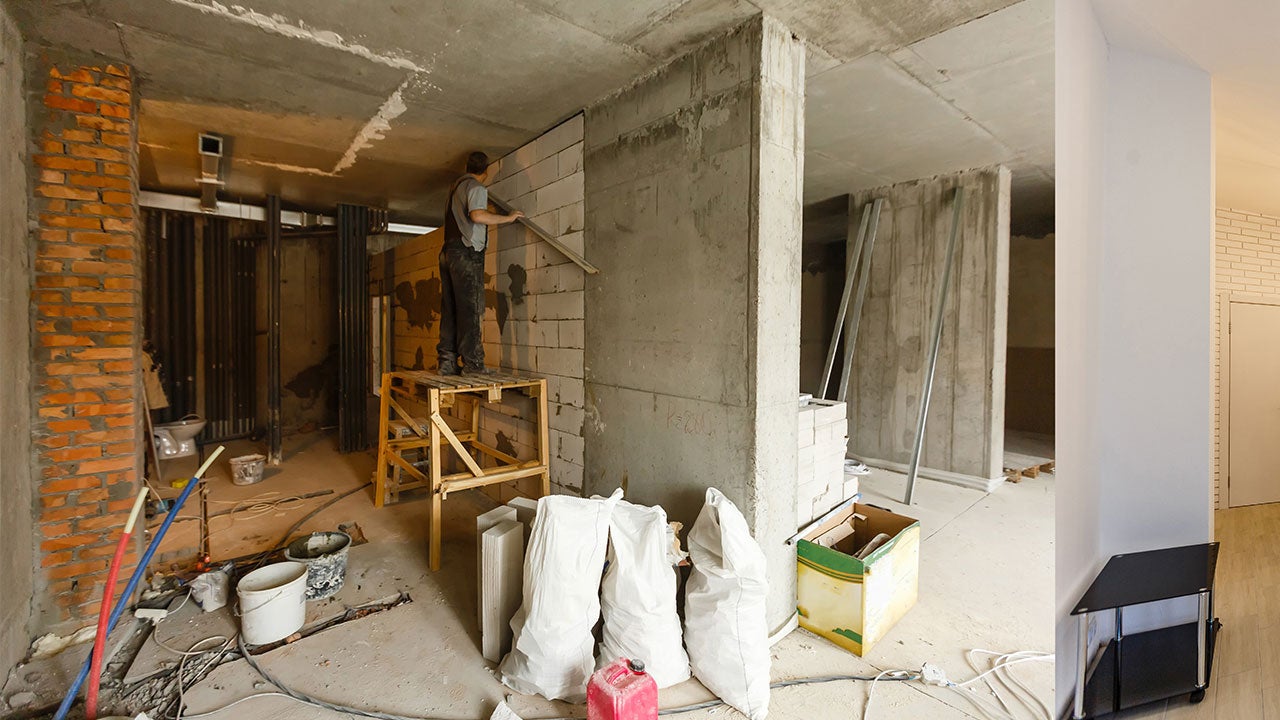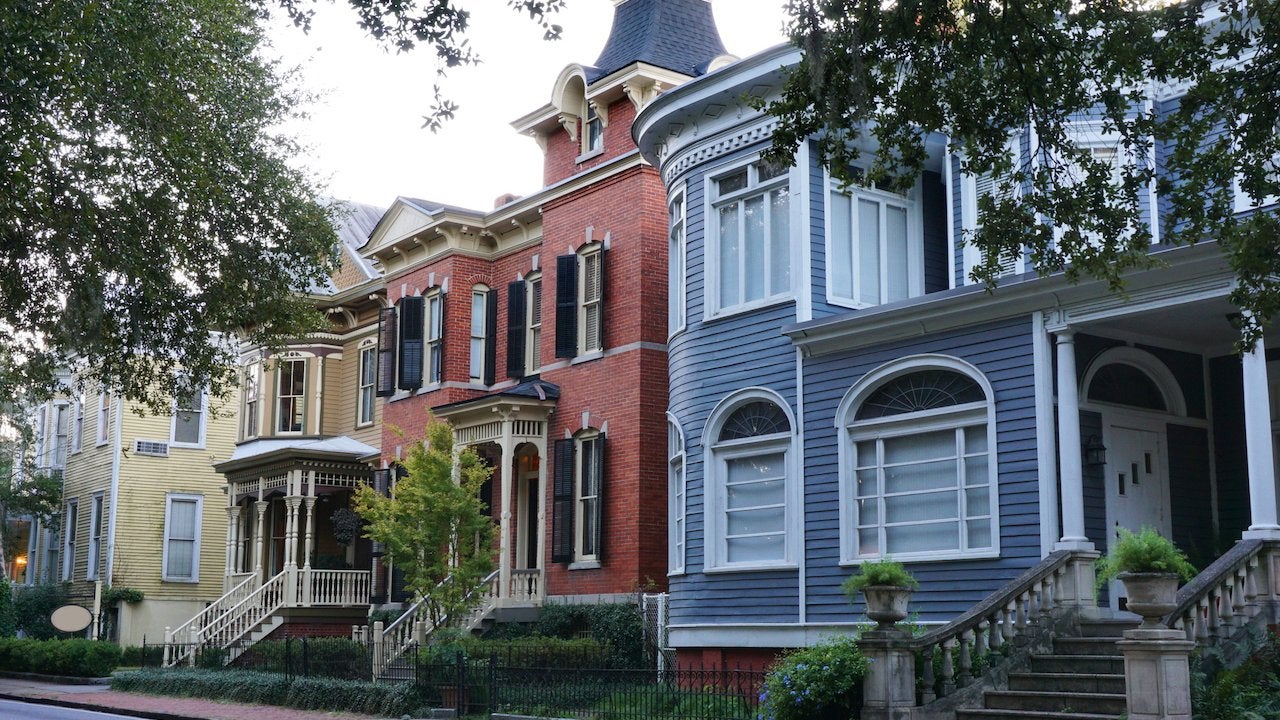Resurfacing vs. refinishing hardwood floors: What’s the difference?

Our writers and editors used an in-house natural language generation platform to assist with portions of this article, allowing them to focus on adding information that is uniquely helpful. The article was reviewed, fact-checked and edited by our editorial staff prior to publication.
Inevitably there comes a time when your hardwood floors start to look a little worn and in need of refreshment. You contact your friendly flooring pro, who asks, “Do they need to be just refinished or entirely resurfaced?” Say what?
Although the terms sound alike (and are sometimes used interchangeably), among contractors refinishing and resurfacing floors do mean two distinct things, with different processes and different price tags. Both can be performed on a variety of wood floors, including traditional hardwood and engineered wood (aka veneers). Here’s how to distinguish between refinishing hardwood floors and resurfacing them, and how to tell which is the best fix for your flooring.
What is refinishing a hardwood floor?
Refinishing a hardwood floor basically means giving it a facelift. Refinishing a floor involves:
- removing the floor’s current varnish, seal and stain
- sanding down the floor’s top layer, to expose the bare wood and its natural grain
- applying a fresh stain and lacquer or varnish
- applying a new coat of sealant
Since it’s a somewhat superficial operation, “refinishing” can be done on a variety of floor types, including tile and laminate — though the exact process differs, depending on the surface. If you have an engineered wood floor — that is, a veneer of natural hardwood wood covering a plywood or synthetic core — it can only be refinished two or three times (depending on the veneer’s thickness), before you expose the core.
What is resurfacing a hardwood floor?
Resurfacing involves all of the above, but more. If refinishing is a cosmetic job, resurfacing is more of a structural one. It comes into play when there’s actual damage to the wood, the wood planks, and/or the fasteners (nails).
Resurfacing the floor means repairing it by:
- removing and replacing planks
- grinding planks down to even them out
- reinforcing the floor with new nails
After all that is done, then the floor can be refinished — sanded down, stained, varnished and sealed.
Refinishing vs. resurfacing wood floors: how to decide
If the floors are in good condition — just looking worn and somewhat scuffed or dull — then refinishing may be your best option. In fact, you might even be able to get away with just recoating them, which skips the sanding process and involves buffing and applying a new topcoat.
Refinishing can help breathe new life into an area of flooring that’s worn out and in need of a refresh. It’s ideal for floors that aren’t structurally compromised and that are still structurally sound, but not up-to-date.
In contrast, if a floor needs more than a facelift, you need to resurface it — that is, replace the old materials. Signs the floor needs resurfacing include:
- Extreme fading, discoloration or uneven color
- Cracks, holes or missing pieces
- Signs of rot or water damage
- Warped, sagging or bent boards
- Missing or bent nails
What does it cost to refinish or resurface hardwood floors?
There are many factors that go into the average cost of refinishing or resurfacing floors: the square footage, the shape of the floor, the type of wood and local labor costs.
In general, refinishing runs $3 to $8 per square foot. The traditional sanding technique is on the cheaper side ($3-$5 per square foot), while the newer “dustless” method (in which the sander contains a vacuum that sucks up most of the grit) runs on the higher side ($6-$8 per square foot). Overall, the national average refinish runs $1,099 to $2,659, according to HomeAdvisor. A simple recoating will cost much less: $1 to $2 per square foot.
Not surprisingly, resurfacing will cost more than refinishing, since you’ll have the repair and replacement expenses in addition to the refinishing charges. How much more can vary tremendously, depending on the nature and extent of the damage. In general, though, hardwood floor repair alone costs typically run from $478 to $1,624, estimates HomeAdvisor.
Even so, that’s a lot less than the cost to replace a hardwood floor entirely, which averages anywhere from $2,500 to $6,800, HomeAdvisor notes, or $14 to $32 per square foot on average — double to triple the cost of repair, according to Fixr.com.
80%
Percentage that labor costs contribute to a hardwood floor refinishing job
Source:
Fixr.com
80%
Source: Fixr.com
DIY or use a pro to fix a hardwood floor?
Since over three-fourths of the cost of fixing a hardwood floor are attributable to labor, it can be tempting to do it yourself. Unless you’re an experienced carpenter, however, resurfacing on your own is not recommended. It requires a whole toolbox of gear, including power saws, grinders and nail guns.
In contrast, refinishing is not out of a DIYer’s league; though it is a messy, smelly business, it mainly requires an orbital sander, which you can rent. Still, while doing it yourself has the potential to save you money, it may be less economical than you think, since costs for all the materials and equipment — including safety gear — can mount as high as $1,000. And it’s likely that a pro can do the job quicker than you can, subjecting the household to unpleasant smells and harmful substances for a shorter period.
Fixing surface scratches on hardwood floors
One floor fix amateurs can make: dealing with superficial or surface scratches. If the scratches are only on the surface finish of your hardwood floor, a simple cleaning might be enough to remove them. If they run deeper but are still minor, you can rub a wax stick or an unshelled walnut over the scratched area, apply a thin layer of coconut oil, or create a mixture of baking soda and olive oil. Commercial scratch removers, stain markers and blending pencils can also be used.
For deeper scratches, you might need to use fine-grit sandpaper and some elbow grease. After filling the scratched area with wood filler and letting it dry, you can sand it down and apply a matching colorant to the wood filler.
Keep in mind: When sanding, remember to always follow the grain of the wood to achieve a more natural look.
How often should you refinish a hardwood floor?
Hardwood floors are renowned for their hardiness: Along with their beauty, durability is a key part of their appeal. If properly installed and maintained, they can last for a lifetime; in fact, there are historic homes whose original floors have endured for 100 years. This longevity effectively amortizes the relatively high cost of hardwood flooring.
However, like any other natural material, hardwood floors will start to show signs of wear and tear over time, especially in high-traffic areas like a hallway or the entrance. How often you should refinish your floors is primarily determined by the level of usage and the amount of foot traffic they experience. On average, experts suggest refinishing hardwood floors every 7 to 10 years. However, if your floor is in an especially busy area or if you have pets whose claws are tough on wood, you may need to refinish more often.
Bottom line on resurfacing vs refinishing hardwood floors
Both refinishing and resurfacing involve some type of hardwood floor restoration, but they serve different purposes.
If your floor is merely scratched and scuffed, you’re better off refinishing than resurfacing it. That’ll restore its original shine, and it’s less invasive. Instead of removing the old flooring materials entirely, refinishing involves removing only the top layer of your existing flooring (including the finish), and then replacing it with a new layer.
However, if the floor is in noticeably bad shape, you’ll probably want to restructure it instead. It will cost more and be a more time-consuming process, but it will in effect create a whole new surface.
No matter which method you choose, you shouldn’t let your floor go too long without being properly maintained.
You may also like

How much does a bathroom remodel cost?

What’s the difference between a home renovation and a remodel?




